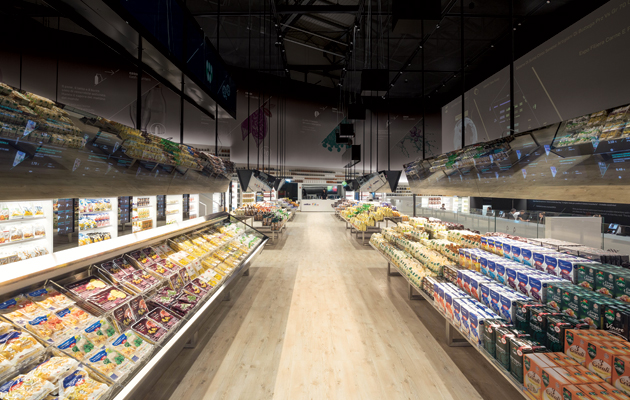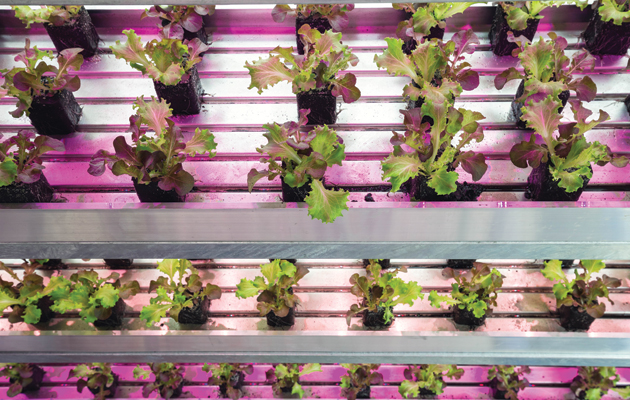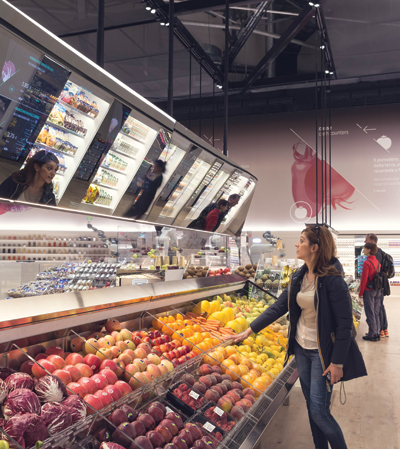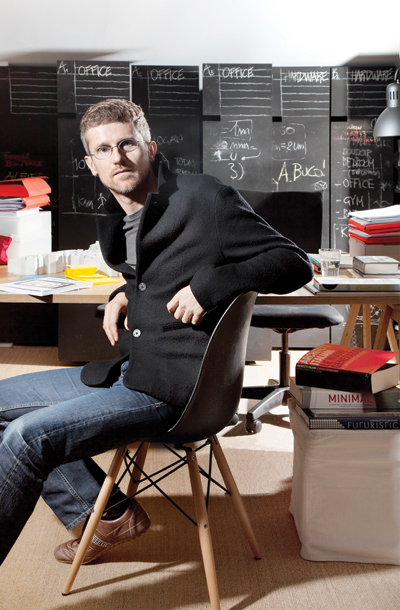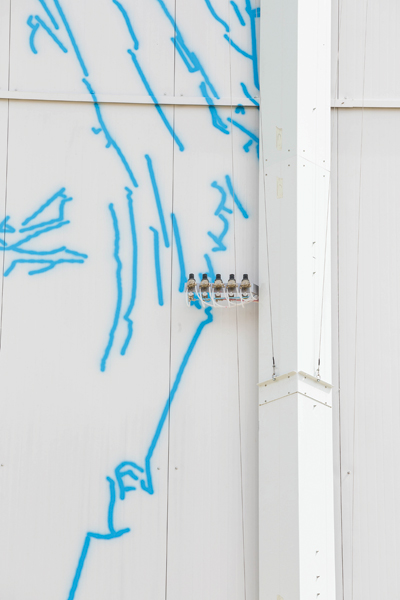|
|
||
|
Carlo Ratti Associati’s latest project is the “Future Food District” – a 7,000sq m experimental, working supermarket situated in the heart of Milan’s Expo grounds. David Michon spoke to the designer about how he thinks data and information can enrich the shopping experience In partnership with Italy’s largest supermarket chain, Coop, Carlo Ratti’s design firm and his MIT SENSEable City Lab crew attempt to marry the sure-to-be world of hi-tech, interactive digital screens and collaborative robotics with a basic design akin to the classic municipal market hall. The outcome is the Future Food District (FFD): a 7,000sq m experimental, but working supermarket situated in the very heart of Milan’s Expo grounds. ICON: What’s wrong with the supermarket of today anyway? Was there a problem you were trying to solve? Carlo Ratti: Data and information can enrich the shopping experience, and what we first wanted to figure out was how we could better convey that information. We were inspired by Italo Calvino and one of his short stories, Mr Palomar. In that story, Mr Palomar goes to a fromagerie in Paris and feels as if he is in a museum, as if he is in the Louvre, because every piece of cheese has a different story. So we tried to figure out how we might do that, so people could know more about the product. That’s quite important, because with more information you can promote more informed consumption. But we also wanted to make the supermarket a bit more similar to the old market – we wanted people to see each other, so everything is on big tables [rather than shelves] and it becomes much more social. ICON: For you then, what does the FFD offer as an experience? CR: The question is how to introduce technology in a seamless way. People have tried it before: Tesco did an experiment in Seoul a couple of years ago where you could actually take out your phone and scan a QR code to learn more about products, and also order them. But they closed it down: there was too much technology. We wanted to do something that anyone could use. So basically, the way it works, we used Kinect – the same gesture recognition technology that is used for Xbox – and mirrors. The mirrors not only reflect the product, but also display information: they are one-sided mirrors back-mounted with screens. So what you do is approach a product, then point to a product or touch a product and finally you get all of this additional information appearing on the screens. It’s almost like an accordion that opens up and tells you, one after another, about all these things that you might be interested in. |
Words David Michon
Above: Inside the Future Food District, with products arranged horizontally to improve eye contact between shoppers
Images: Delfino Sisto Legnani |
|
|
||
|
Lettuce is grown hydroponically as part of the FFD’s vertical farm |
||
|
ICON: But thinking about what kinds of stories the average food item might tell, I mean – at some supermarkets surely you don’t really want to know the story of what you’re buying – because it’s not a good one! CR: Yes, but if people put on pressure to know more, that will change practices of production. The very fact that customer might say, “I want to know” – because today it is very difficult to ask – ultimately it gives more power to consumers, to vote with their wallets and their feet.
A hand held over a product brings up consumer information on overhead screens ICON: You’d hope! But what’s also interesting is that you’ve tried to integrate this technology in a way that pushes people to interact with one another more, not just with the screens and products. CR: We tried to put all the products horizontally, so that people can see each other and you can increase the interaction not only between people and product, but also between people and people. And also to look at the supermarket sections: it’s stepping down on different levels, so there is a lot of visibility. Then with the mirrors, you can get a bird’s eye view of what is going on. It’s a bit like those beautiful Andreas Gursky pictures of supermarkets at the end of the 20th century – but in those images he was targeting the abundance of products, the sea of products. We thought it would be better to show the social context, with all the people alongside the products. Ultimately, the products are a way to tell stories, and show something about what we want to consume and what our values are. So the stories behind products can help us socialise. |
||
|
Robotics have been used to perform the “boring” work, such as reshelving, says Ratti |
||
|
ICON: Does that mean future product design will need to include less information on packaging – that we’ll be getting that only at the supermarket? CR: No, you still want something that tells you as much information as possible in a very immediate way when you’re at home. But there are limits to that – so that is what you get at the shop, more of the data is accessible.
Ratti is an architect and engineer by training ICON: Where did you seek inspiration? Just from the “supermarket”? CR: From a concept point of view, it was Calvino. From a design perspective, I went to visit a large number of markets – think about the Mercado in São Paulo, or the Or Tor Kor in Bangkok. And, something more personal: usually I feel at home in a new place after I go to the market there, when I’ve been cooking there. You really connect with what people are producing and what people are eating.
|
||
|
Ratti believes growing things matters too, for example this ecoLogicStudio algae installation |
||
|
ICON: But there are robotics, too. In terms of running the supermarket, where do you use robots and where do you still use people? CR: We use some collaborative robots [those with sensors that can know when people are near] to remove some of the boring tasks – such as reshelving. The people who work at the supermarket are there to do what has more added value, the care: to find the right products, answer questions, do tastings.
On the exterior of the building, the world’s largest plotter paints images ICON: Has the experiment been a success, in your opinion? CR: It’s a bit too early to tell, we’re tracking it. Until today, it was difficult to understand the relationship between spatial configuration and sales. But we had a visit from a very big competitor to Coop, and they loved the social interaction. They said, “Oh, we should immediately develop this for our new supermarkets in the United States.” And people have told me they love to spend time here – and there is a lot of competition for time at the Expo. |
||
|
An exterior seating area lets shoppers and passers-by relax |
||

